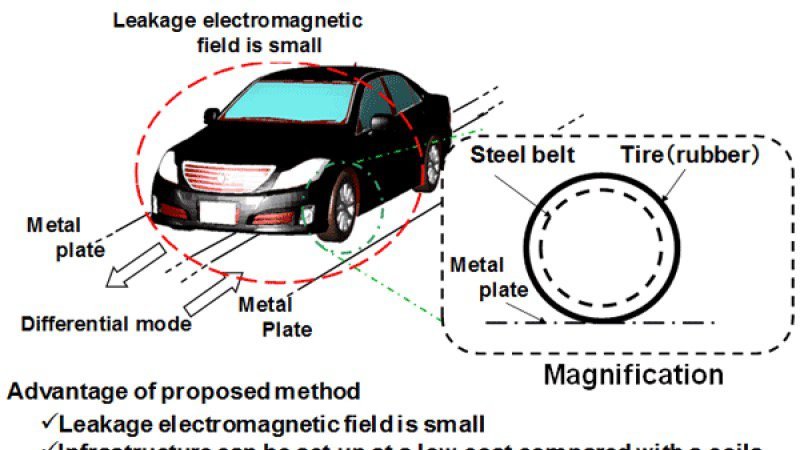Japanese University Creates EV That Gets Power From the Road

As the tires roll, steel wires in them carry energy from the steel plates in the road to the electric motor. The university already built a full-scale proof of concept on a 98-foot test course, and the EV reached about six miles per hour there. "Acceleration was smooth, and the ride was comfortable." professor Takashi Ohira, told The Japan Times.
Ohira has been working on ways to make batteries less necessary for EVs for several years. In 2011, he proposed embedding radio frequency transmitters in the road, and using the steel belts in the tires and special equipment in the vehicle to convert the signal to electricity. This test seems to be a development of that research.
While this method works, there are a lot of problems that still need solutions. For example, how much energy would you need to flow through the road to power thousands of vehicles every day? Also, embedding the necessary equipment in the road would be a gargantuan undertaking. It's difficult to imagine so much money going to such a massive infrastructure project, but that doesn't mean that Ohira is alone in his quest to turn roads into charging surfaces. Volvo has tested inductive charging in short sections of road to top up the batteries in a city boss while it was on the move. Last year, Goodyear also proposed tires than can charge a car. And HaloIPT and the Korea Advanced Institute of Technology have been tinkering with the idea for years.
Nouvelles connexes


